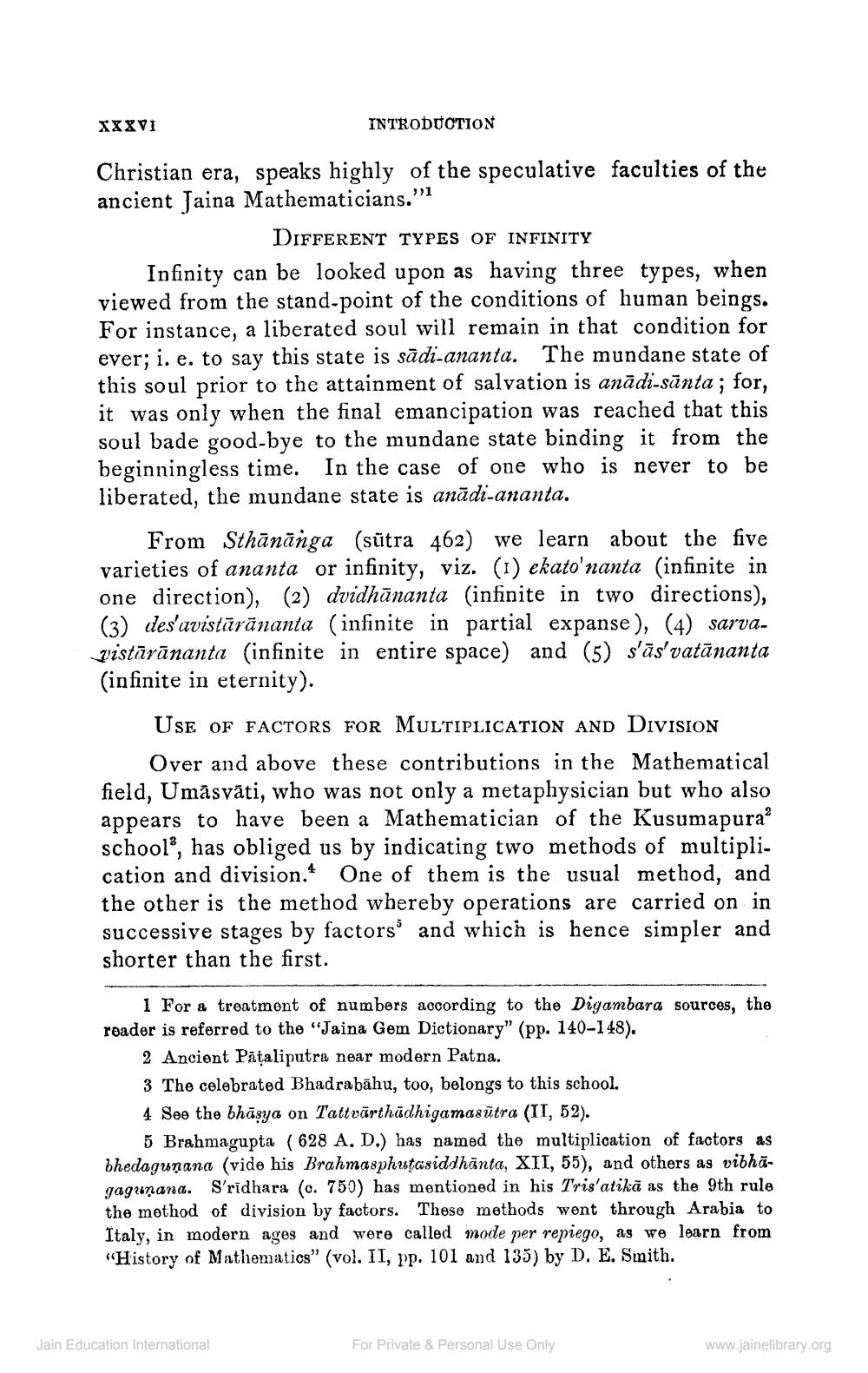________________
XXXVI
INTRODUCTION
Christian era, speaks highly of the speculative faculties of the ancient Jaina Mathematicians."'1
DIFFERENT TYPES OF INFINITY Infinity can be looked upon as having three types, when viewed from the stand-point of the conditions of human beings. For instance, a liberated soul will remain in that condition for ever; i. e. to say this state is sādi-ananta. The mundane state of this soul prior to the attainment of salvation is anādi-sānta; for, it was only when the final emancipation was reached that this soul bade good-bye to the mundane state binding it from the beginningless time. In the case of one who is never to be liberated, the mundane state is anādi-ananta.
From Sthānānga (sūtra 462) we learn about the five varieties of ananta or infinity, viz. (1) ekato'nanta (infinite in one direction), (2) dvidhānanta (infinite in two directions), (3) des'avistāränanta (infinite in partial expanse), (4) sarvavistārānanta (infinite in entire space) and (5) s'ās'vatānanta (infinite in eternity).
USE OF FACTORS FOR MULTIPLICATION AND DIVISION
Over and above these contributions in the Mathematical field, Umāsvāti, who was not only a metaphysician but who also appears to have been a Mathematician of the Kusumapura school, has obliged us by indicating two methods of multipli. cation and division. One of them is the usual method, and the other is the method whereby operations are carried on in successive stages by factors and which is hence simpler and shorter than the first.
1 For a treatment of numbers according to the Digambara sources, the roader is referred to the "Jaina Gem Dictionary” (pp. 140-148).
2 Ancient Pāțaliputra near modern Patna. 3 The celebrated Bhadrabāhu, too, belongs to this school. 4 See the bhāsya on Tattvārthādhigamasūtra (IT, 52).
5 Brahmagupta ( 628 A, D.) has named the multiplication of factors as bhedagunana (vide his Brahmasphutasiddhānta, XII, 55), and others as vibhägagunana. Sridhara (o. 750) has mentioned in his Tris'atikä as the 9th rule the method of division by factors. These methods went through Arabia to Italy, in modern ages and were called mode per repiego, as we learn from "History of Mathematics" (vol. II, pp. 101 and 135) by D. E. Smith.
Jain Education International
For Private & Personal Use Only
www.jainelibrary.org




